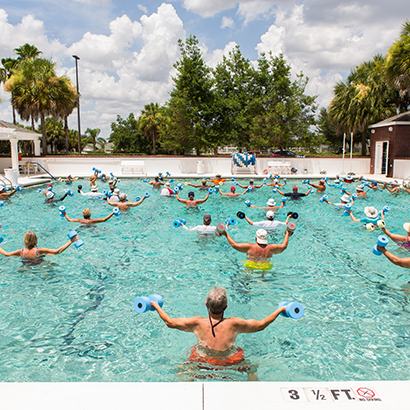
Park and recreation facilities are the heart of communities, especially during the summer. They play a crucial role in supplying employment opportunities and are spaces for countless activities tailored to children and families. With summer being the busiest time for parks and recreation, valuable programs can suffer without the addition of summer seasonal staff. From summer camps and sports leagues to outdoor events, parks and recreation is an essential avenue for fostering a vibrant and engaged community. In September 2023, the NRPA Research team sought to capture the experiences park and recreation agencies had in hiring their summer seasonal staff by conducting a survey completed by agency directors. The Summer Seasonal Hiring Report, released in February 2024, highlights the results of that survey and serves as the basis of this blog post.
The summer seasonal workforce is critical to ensuring the success of programming and outdoor activities in the summer. Ninety-seven percent of park and recreation agencies hired summer seasonal staff in 2023. Despite this high percentage, nine in 10 park and recreation agencies experienced challenges in hiring or keeping summer seasonal staff. Fifty-two percent of agencies reported that employees are unable to work for the whole summer season. Almost equal, 50 percent of agencies said they cannot match the wages of other seasonal employers.
When searching for their summer seasonal workforce, 32 percent of agencies found that a lengthy hiring process played a determining role that resulted in candidates taking other jobs while waiting to hear back. This particularly affects agencies that serve populations of 100,000 to 250,000 residents and jurisdictions with more than 250,000 residents. Another major obstacle is the belief that teenagers and young adults are not interested in working during the summer. Seventy percent of agencies reported a lack of interest in work from high school/college students as their biggest hiring obstacle.
Despite this number, park and recreation agencies’ summer seasonal workforce is mainly comprises college and high school students — especially in the role of lifeguard. Five in six park and recreation summer employees are under 24 years old. Meanwhile, 13 percent of the summer seasonal positions are filled by adults between 24 and 54, and 5 percent by adults 55 and older. The successful recruitment of these individuals is achieved through the implementation of various advertising methods.
The most popular method to recruit summer employees at 96 percent is using one’s own agency or city website. Ninety-five percent comes from social media channels, and 75 percent from posting on online job sites. Smaller communities, with populations of fewer than 50,000 residents, had a higher likelihood of achieving their summer seasonal workforce hiring goals compared to larger districts among parks and recreation agencies. More than half of all parks and recreation agencies (55 percent), regardless of size, aim to begin their recruitment for the summer season by February, with 91 percent setting a goal of having the new hires in place by May.
The Summer Seasonal Hiring Report details the value of these temporary park and recreation employees, as they are influential in creating a safe, fun space for people of all ages. Navigating the hurdles of hiring summer seasonal staff can be tricky, but 97 percent of park and recreation agencies look for summer seasonal workers to effectively implement the programs on which their communities rely. Stay tuned for the next blog where I will discuss the benefits of working at parks and recreation during the summertime and the incentives offered.
Alexandra Ziegler is NRPA's Research Assistant Co-Op


